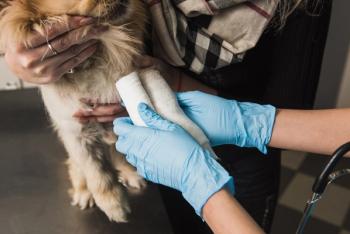
The old and the new of veterinary patient monitoring
Tools that have been around for years are more useful when we understand them better, and new tools can increase patients quality of life, says emergency and critical care specialist Dr. Garret Pachtinger.
When it comes to patient monitoring, there are two important things to be aware of, says
Q: What's new in veterinary patient monitoring?
A: I think there are two important things to talk about. One is a better understanding of the tools we already use in practice for patient monitoring. For example, blood glucose monitoring: For years we've recognized that hemoconcentrated patients were reading artificially low on the blood glucose monitor. My target animal is the greyhound. They always come in with packed cell volumes (PCVs) of 75 or 65, and that's normal for them. If they're dehydrated it could even be higher. They artificially look low on the glucometer and we didn't really recognize that to be a significant problem.
Take dehydrated or hypovolemic gastroenteritis patients-they can also look hemoconcentrated and hypoglycemic on the glucometer. What we've studied and know now is that the glucometer can read artificially low in a hemoconcentrated patient, or artificially high-hyperglycemia-in an anemic patient. What we're learning is how to use these tools better, even though we've had them in practice for a period of time.
The second thing is there are some other newer tools coming into practice as well, whether it be cloud computing or electrodiagnostic monitoring, where patients aren't even hooked up to machines anymore. Telemedicine, or telemetry, is being used so patients can be monitored cageside on computer monitors so you're not constantly interrupting them and disturbing them for their quality of life when they're in the hospital and they're sick.
Dr. Garret Pachtinger is trauma center medical director for Veterinary Specialty & Emergency Center in Levittown, Pennsylvania; COO of
Newsletter
From exam room tips to practice management insights, get trusted veterinary news delivered straight to your inbox—subscribe to dvm360.





